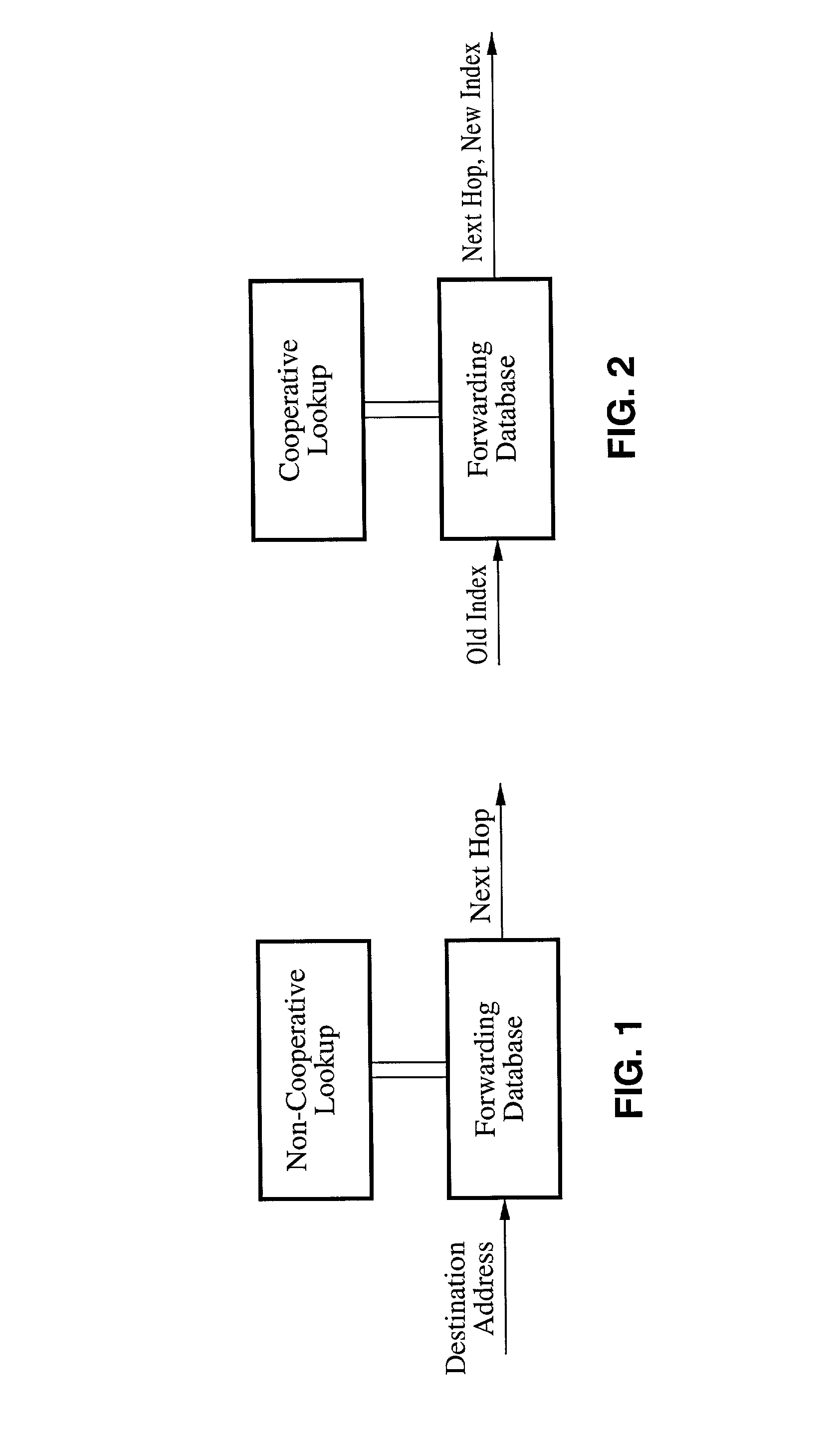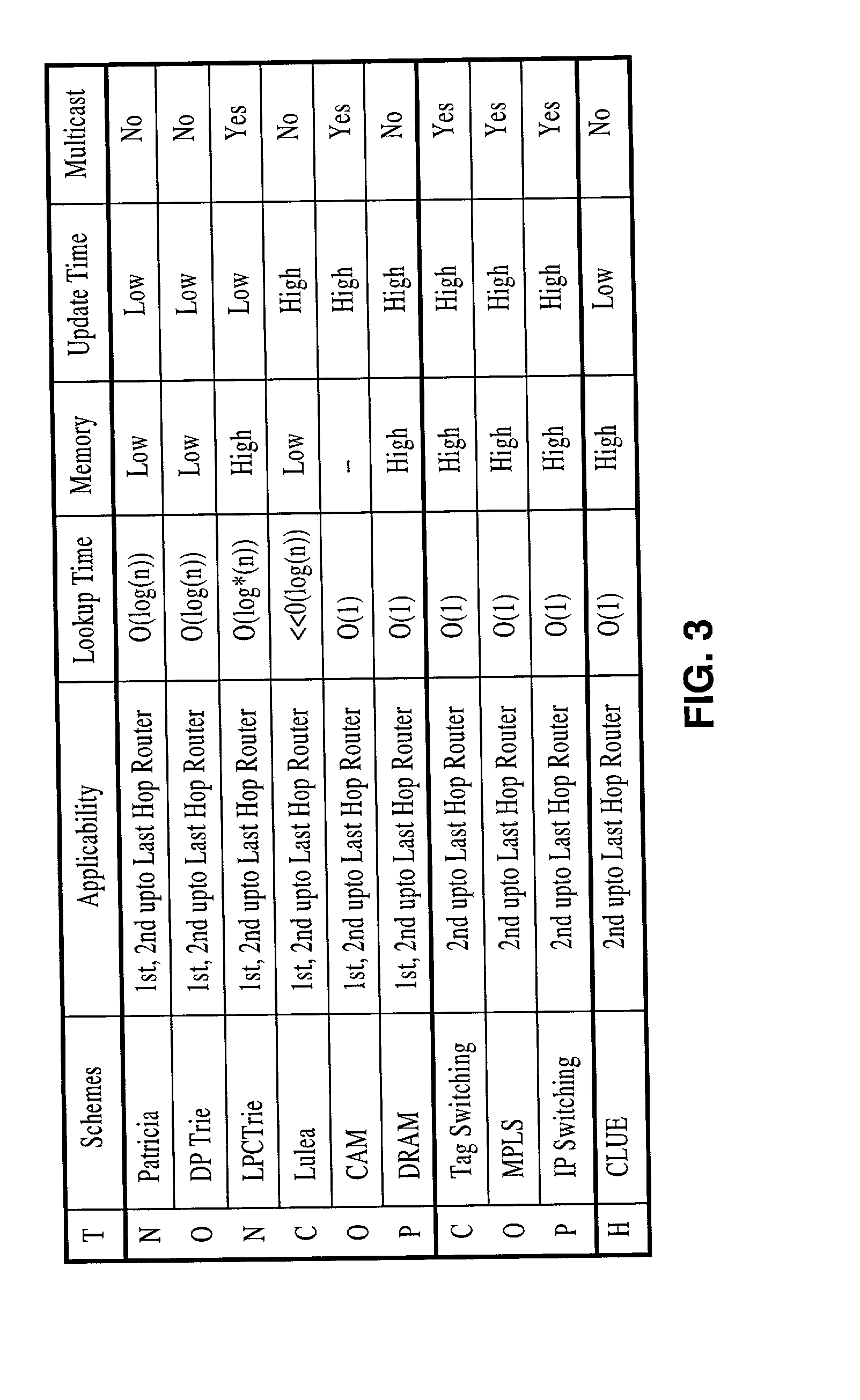Cluster-based aggregated switching technique (CAST) for routing data packets and information objects in computer networks
a technology of information objects and data packets, applied in the field of routing data in the internet, can solve the problems of large number of memory accesses, insufficient high-speed networks, and reducing the processing time required for packet forwarding
- Summary
- Abstract
- Description
- Claims
- Application Information
AI Technical Summary
Benefits of technology
Problems solved by technology
Method used
Image
Examples
Embodiment Construction
[0085] The present invention, which is referred to herein as "Cluster-based Aggregated Switching Technique" or "CAST", is a method for expediting unicast and multicast routing-table lookups by organizing routing-table entries into clusters, and by using pointers to such clusters in the data packets being switched. Clusters are organized collaboratively according to various clustering methods.
[0086] As used herein, the term "data packets" is intended to encompass "information objects" and vice versa, and use of one term is not intended to exclude the other. Additionally, the terms "routing" and "switching" are use synonymously.
[0087] 1. Description of CAST
[0088] CAST is a hybrid lookup method that achieves high packet processing power less expensively than other techniques, and with low memory requirements as well as low update time. CAST also supports high degree of prefix aggregation. Another advantage of CAST is its applicability to all hop routers on the path. This scheme is appl...
PUM
 Login to View More
Login to View More Abstract
Description
Claims
Application Information
 Login to View More
Login to View More - R&D
- Intellectual Property
- Life Sciences
- Materials
- Tech Scout
- Unparalleled Data Quality
- Higher Quality Content
- 60% Fewer Hallucinations
Browse by: Latest US Patents, China's latest patents, Technical Efficacy Thesaurus, Application Domain, Technology Topic, Popular Technical Reports.
© 2025 PatSnap. All rights reserved.Legal|Privacy policy|Modern Slavery Act Transparency Statement|Sitemap|About US| Contact US: help@patsnap.com



